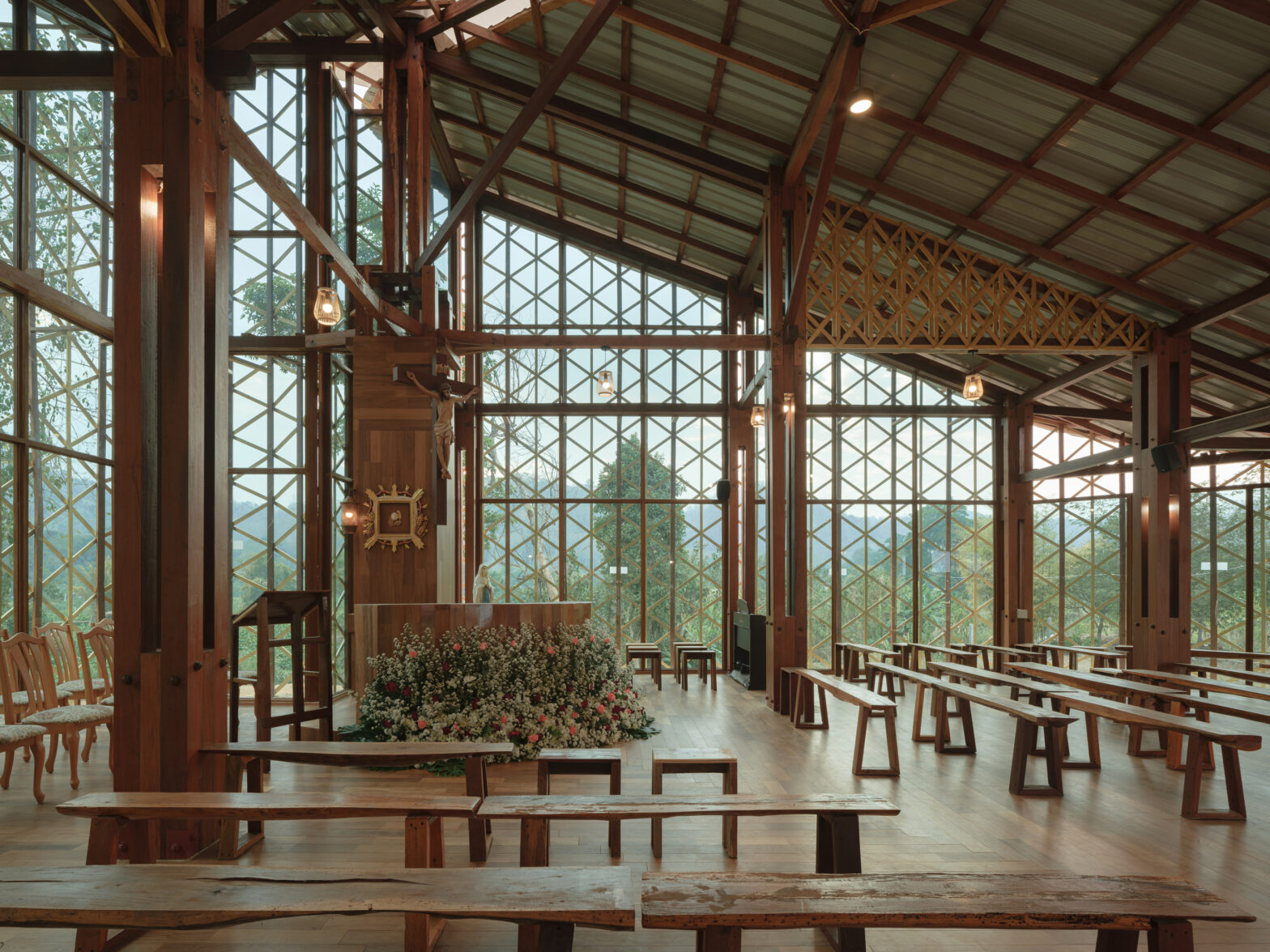Umphang district: a misty frontier
Umphang is Thailand’s most remote district; it is accessible only by the scenic but tortuous Route 1090. The area is so difficult to reach that it remain as a stronghold of Thailand’s communist insurgence until the 1980’s. Its most notable touristic attraction, the Thi Lo Su Waterfalls, was ignored by the national public until relatively recently. Umphang borders the Karen Nationalist Union, a rebel secessionist state still unrecognized by any foreign country, that hosts world’s longest ongoing armed conflict (60 years) against Myanmar. The province is home to several refugee camps under the administration of the Thai military. The Oratory of St Francis Xavier stands in front of the Umphang River, a few kilometers away from the conflict area.

The Xaverian Mission
Thailand is not a signatory member of the 1951 UN Refugee Convention and thus the children fleeing from Myanmar have no right to a Thai Identification Number. Since the Royal Thai Police has no means to identify or track them, the kids turn into easy targets for all shorts of human traffickers and transnational mafias. The Xaverian Missions are particularly active in this segment of the border; during my long stay with them —particularly during the peak on hostilities during February-March of 2022— I witnessed from within their restless efforts to place the children in local schools while maintaining a fluid communication with their parents across the troubled frontier.
As a result of the long-standing presence of British missionaries in colonial Burma, ethnic Karen on both sides of the Myanmar-Thai border are predominantly Christian. In order of creating a worship space that could help articulate these humanitarian efforts, which were supported by Catholic families on both sides of the border, and serve as spiritual beacon of the growing community, father Reynaldo Tardielly commissioned the design of the temple to Paco Garcia Moro. The aim was erecting a landmark building that related to Karen crafts and traditions that would still unequivocally stand and as declaration of Catholic faith.
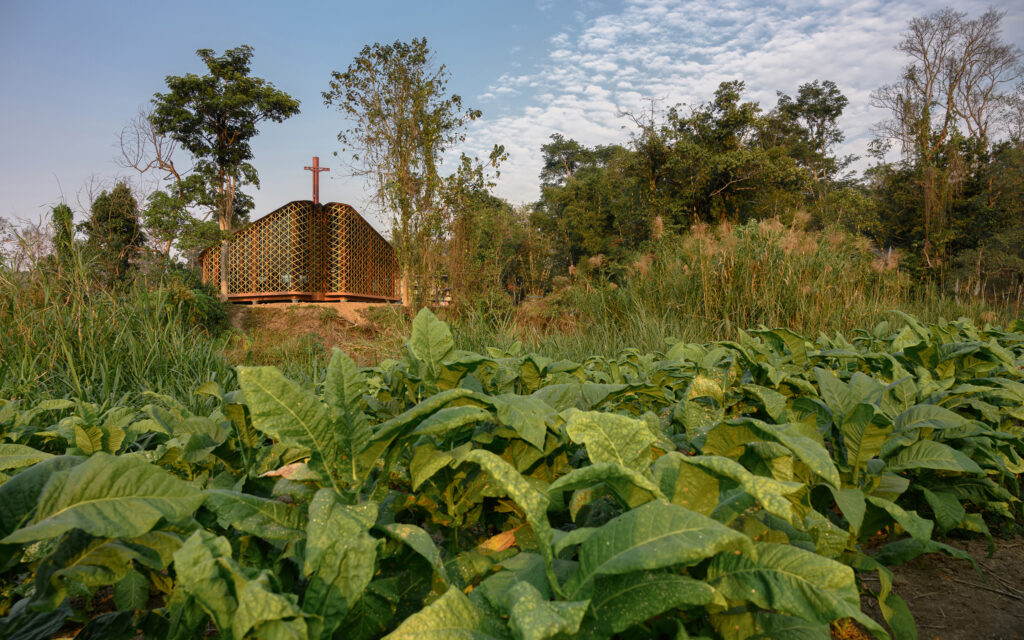
The Oratory
The temple’s layout was inspired by ethnic Karen textile motives, while the outer organic form blends with the spatial configuration originated by the rites of the Catholic liturgy. Its shape evokes a miracle attributed to St Francis Xavier: when on the verge of drowning in a shipwreck in the Moluccas, a crab approached him holding up a crucifix that the saint had previously lost in the sea. The structural grid, originally conceived as a square of interwoven fibers that rises towards the Umphang River, highlights the path to Communion along the central axis. Opposite the altar, the roof spreads lower in order to welcome visitors, leading them to the worship area. According to local customs, the temple was conceived in order to let the community celebrate mass while sitting on the floor. For more formal ceremonies, local families provided benches made of reclaimed wood.

Vernacular crafts
The temple was built in the wood of thakien wood (Hopea odorata), which is generally avoided by Buddhists because it’s believed to host spirits. One third of the wood was reclaimed from the demolitions of vernacular houses in the vicinity and the rest was obtained from local communities managed by the Department of Forestry of Thailand. The woodwork was executed by master carpenter Reen Sulee. Mr. Sulee, who was born in the Karen State, learned geometry and traditional carpentry during his youth in prison. Today he is renowned for his local vernacular houses and keeps the Karen house-building traditions alive.



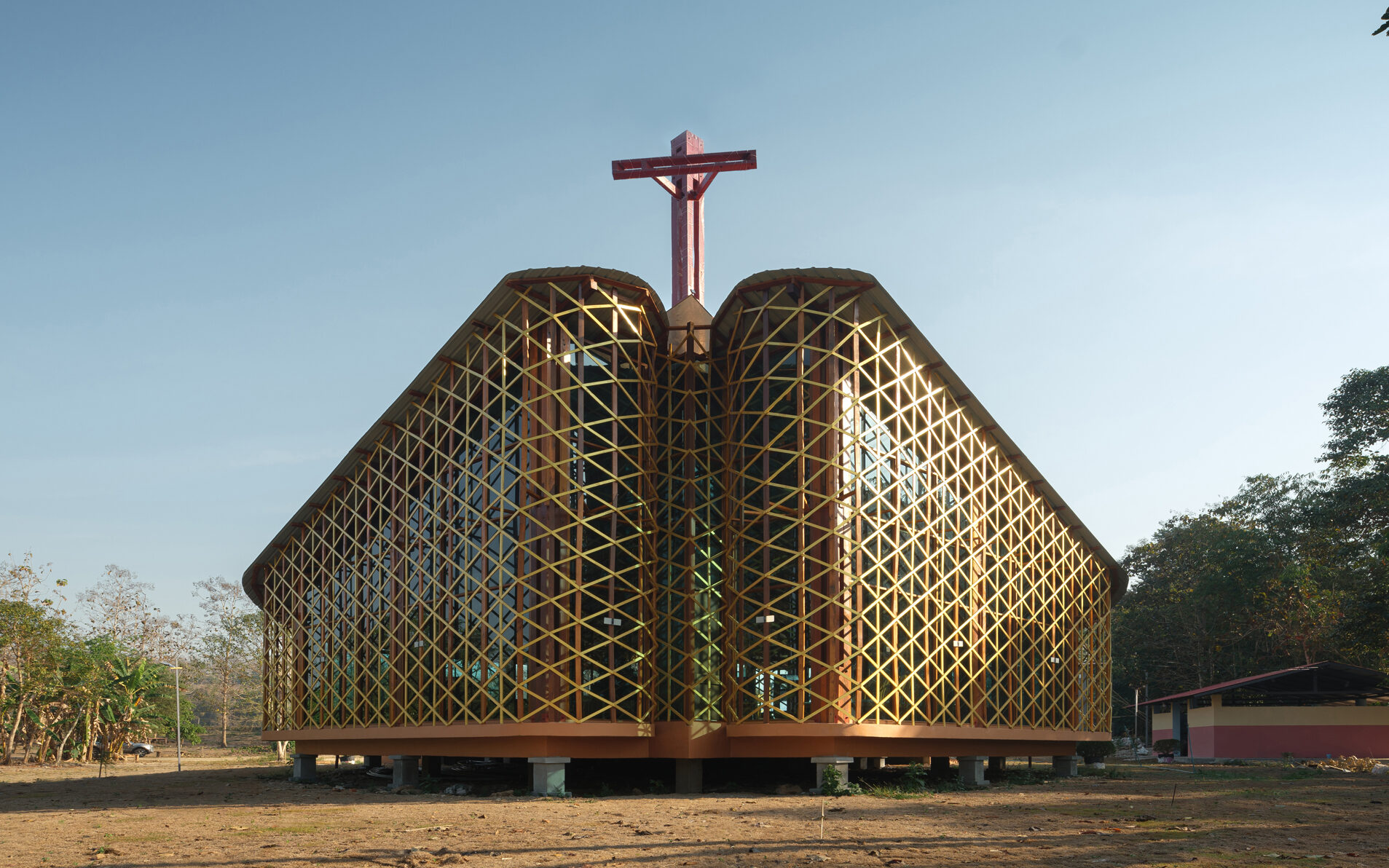
Timber circular economy.
Forty percent of the church was built in teakwood reclaimed from old vernacular houses. These dwellings are still common in the area and were usually erected before the 1989 Thailand ban on the use precious woods. Sadly but understandably, their owners often want to replace them by modern, more convenient brick and concrete houses. These demolished houses are usually priced ‘by the pillar’ since the number of pillars determine approximately the total amount of timber that is on sell. The rest of the building was made from community-managed plantations under supervision of the Thai Forestry Department.




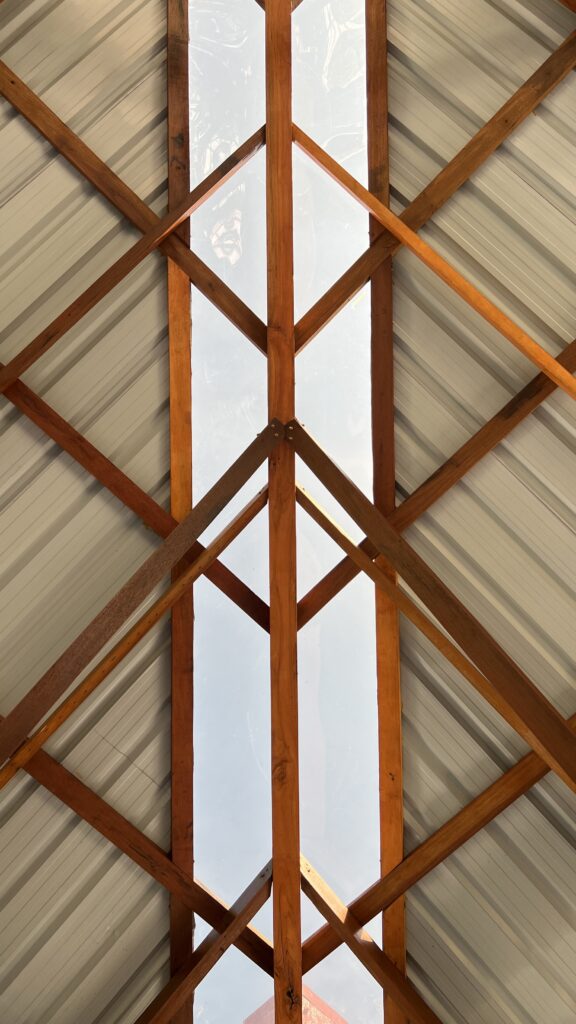
Traditional carpentry as living heritage
The timber structure was built by an ethnic Karen carpenter, Master Sulee. Born in Myanmar, Master Sulee learned geometry and Karen woodwork techniques during his time in prison and, since then, he has become renowned in the area for having built many of the most remarkable vernacular houses around the Umphang Valley.
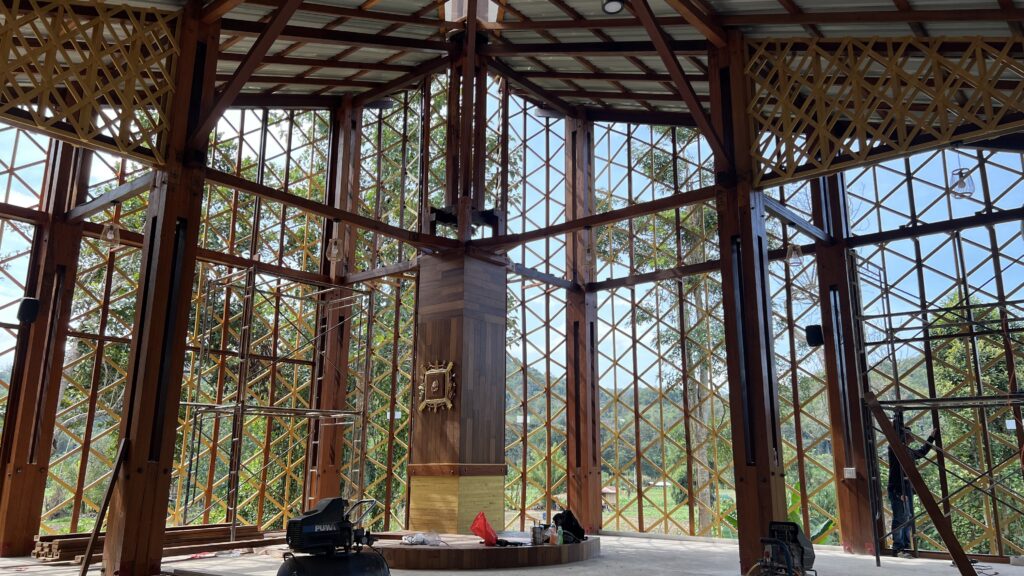
Master Sulee addressed by himself several critical features, such as the structure of the central cross (11 m.), which is also the master pillar of the house. Instead of making it in steel as originally conceived, he managed to make it entirely in timber.

Passive acclimatization
The composite pillars, one of most distinctive findings of this design, allow the river breeze to flow across the building. The shape and location of the church, which rises over a river meander, maximize its exposure to the valley winds and create a pressure differential towards the mountain.
Each pillar is made of four studs of wood which are tied at their base and top by “carriage bolts” that can be bought in local hardware stores. Lamps were placed in the voids within the columns, creating a magical atmosphere that is particularly captivating during dawn and sunset. The lamps and electrical devices were also obtained from nearby shops and installed by electrician Mr. Preecha Laothanasan.
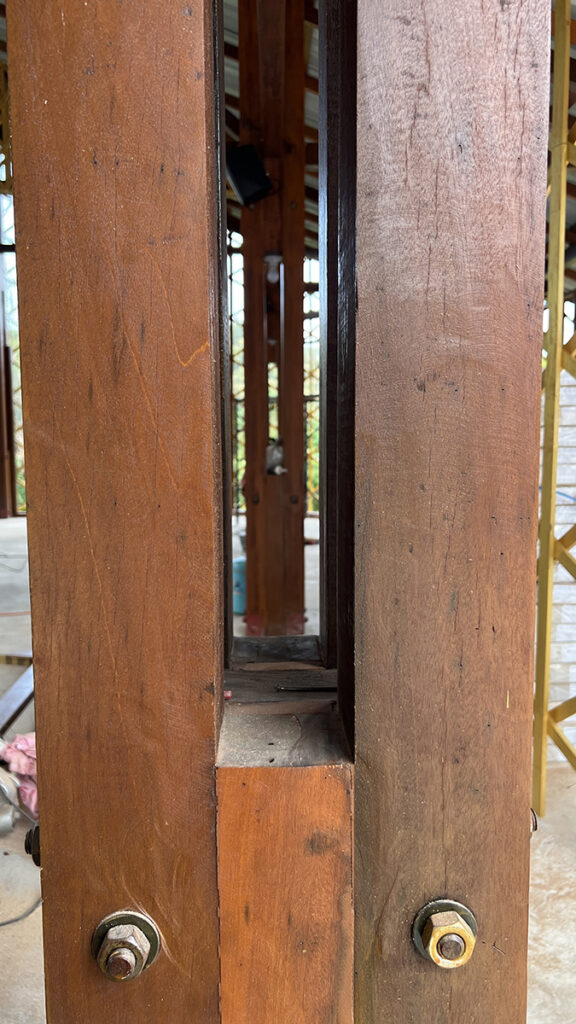

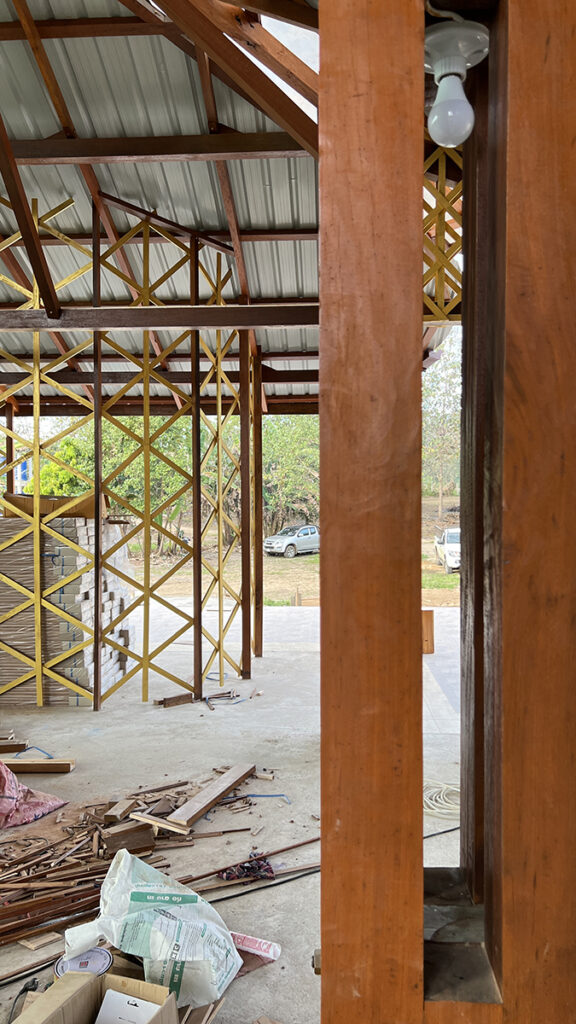


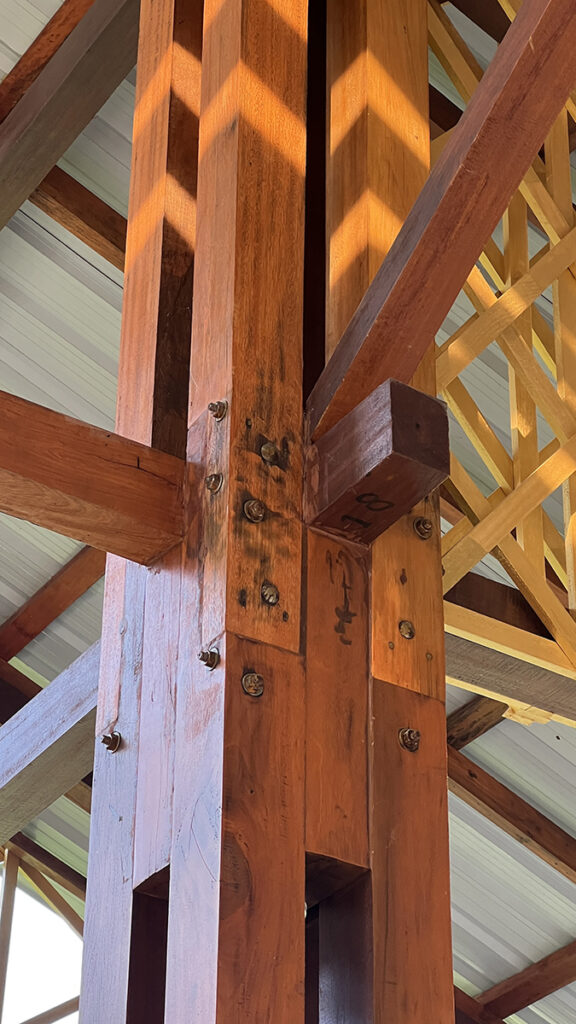

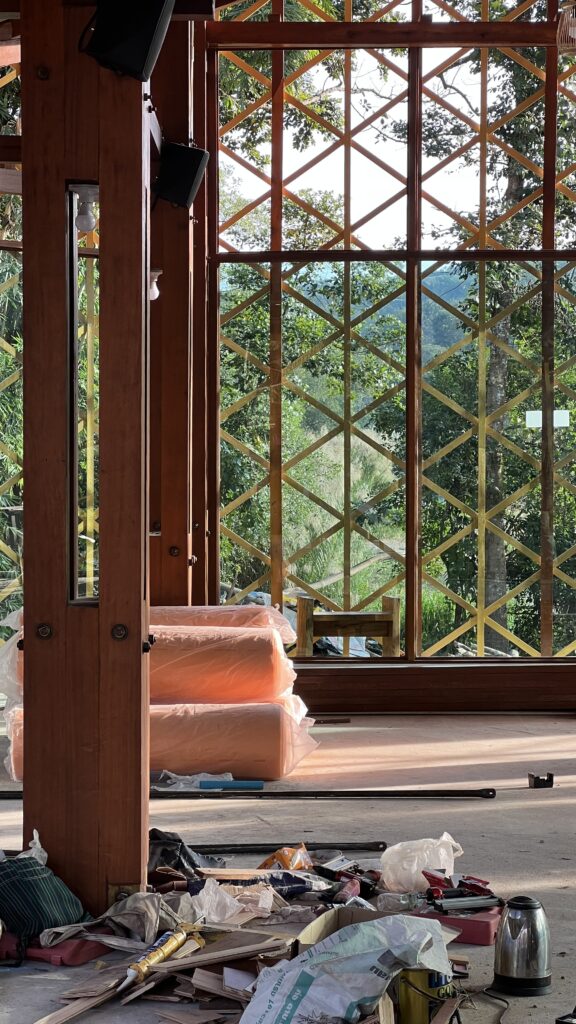

Implantation on the landscape. St Xavier’s Oratory tops the meander in Umphang Valley’s river and the cross stands framed by the two existing trees in a veiled reference to the Crucifixion. The outer lattice is conceived as a natural extension of the vernacular structures around and it echoing the timber envelops that cover Karen vernacular homes. When seen from the entrance side, the pitch room and its rounded corners blend smoothly with the mountains at the background that lead to the border with Myanmar.

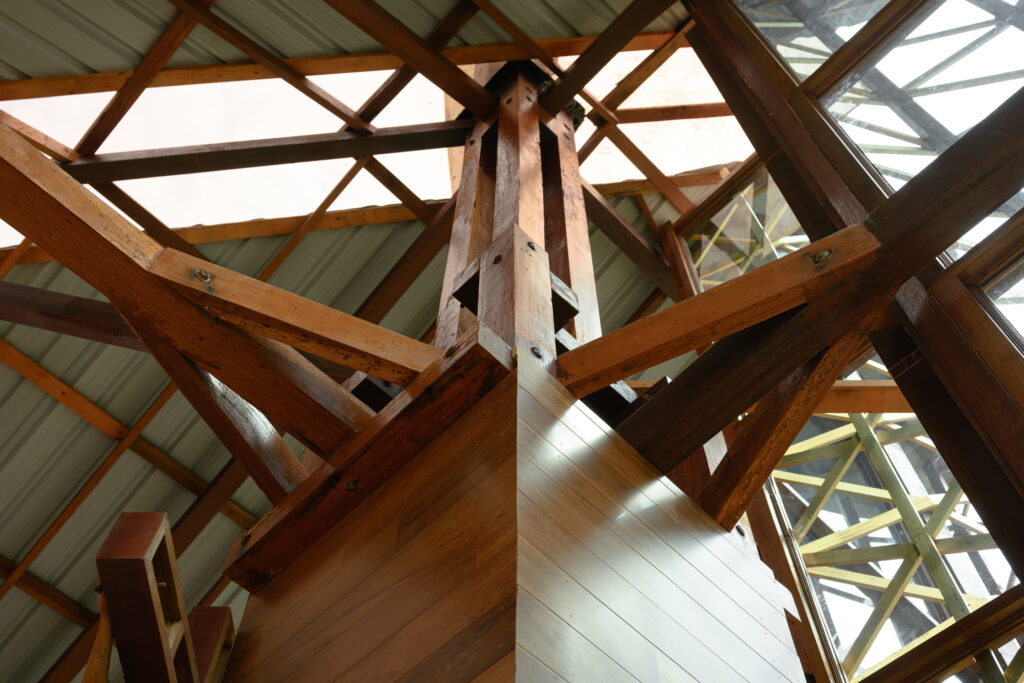
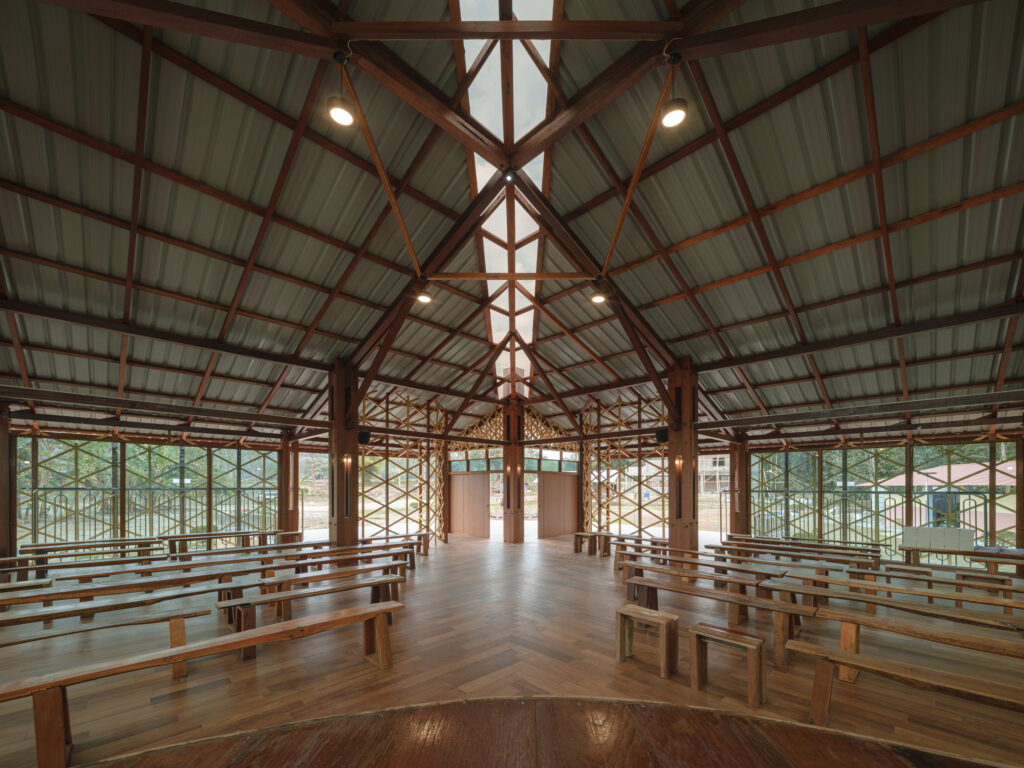
Reinterpretation of Karen motives
As a stateless people thriving in the frontier mountains between Thailand and Myanmar, engulfed in the world’s oldest ongoing military conflict, Karen culture have narrow paths where to manifest and flourish. Weavers and carpenters, both engendering relatively short-lived and movable products, are probably their most distinctive creations. The floor layout and the structural grid of the Oratory aimed to offer a reinterpretation of Karen geometric motives, which are usually based in the interlaced structures of both fabrics and timber mats.

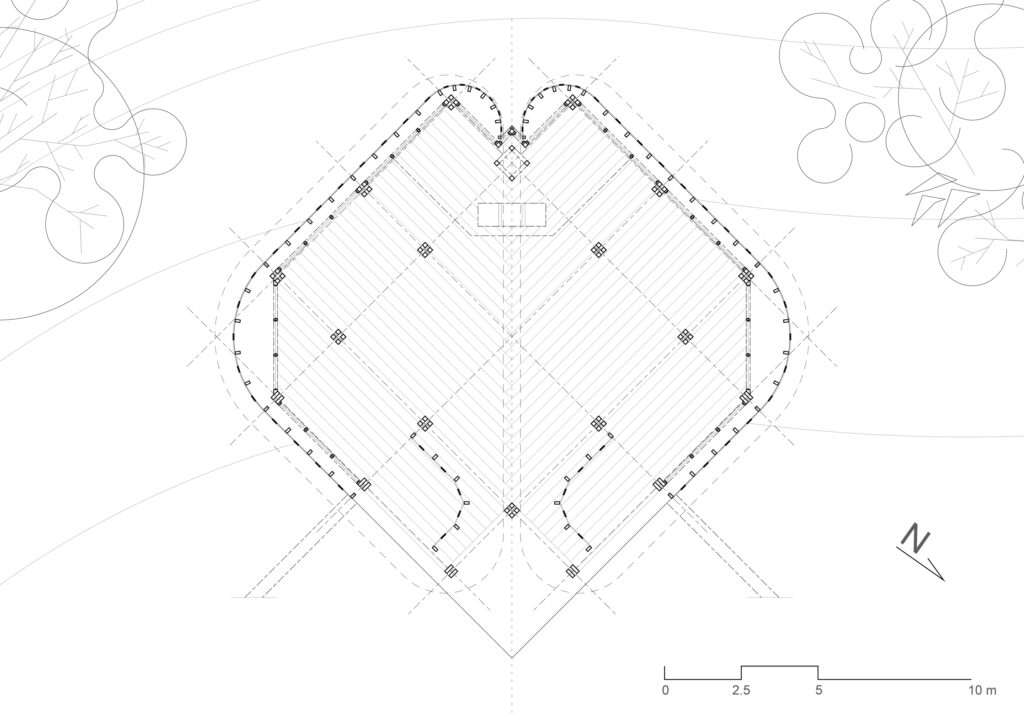
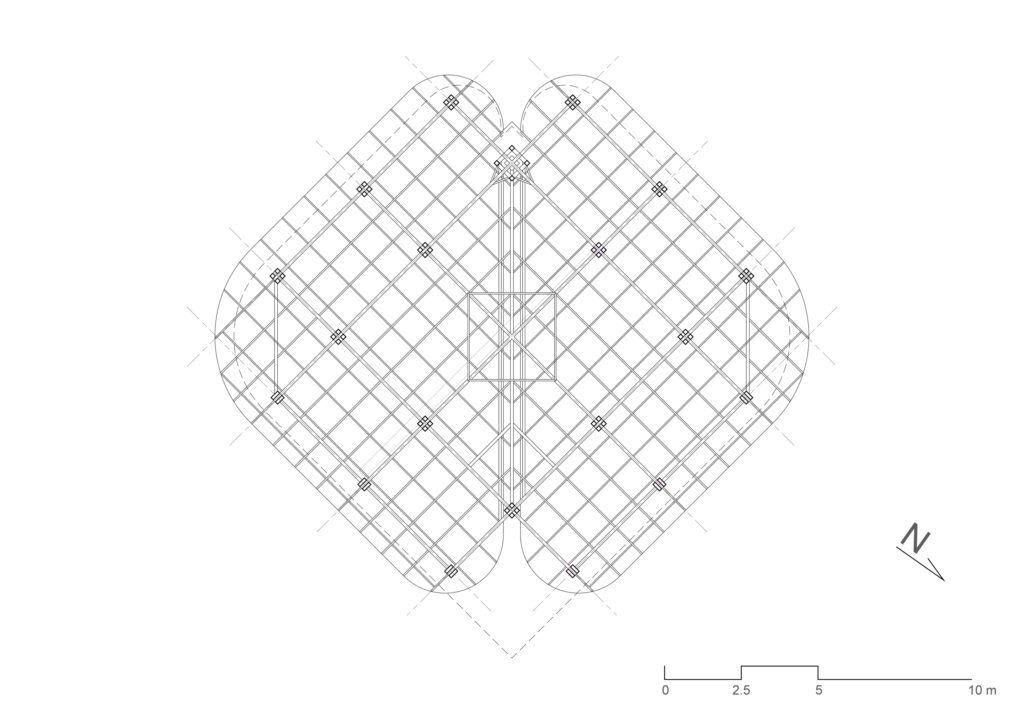

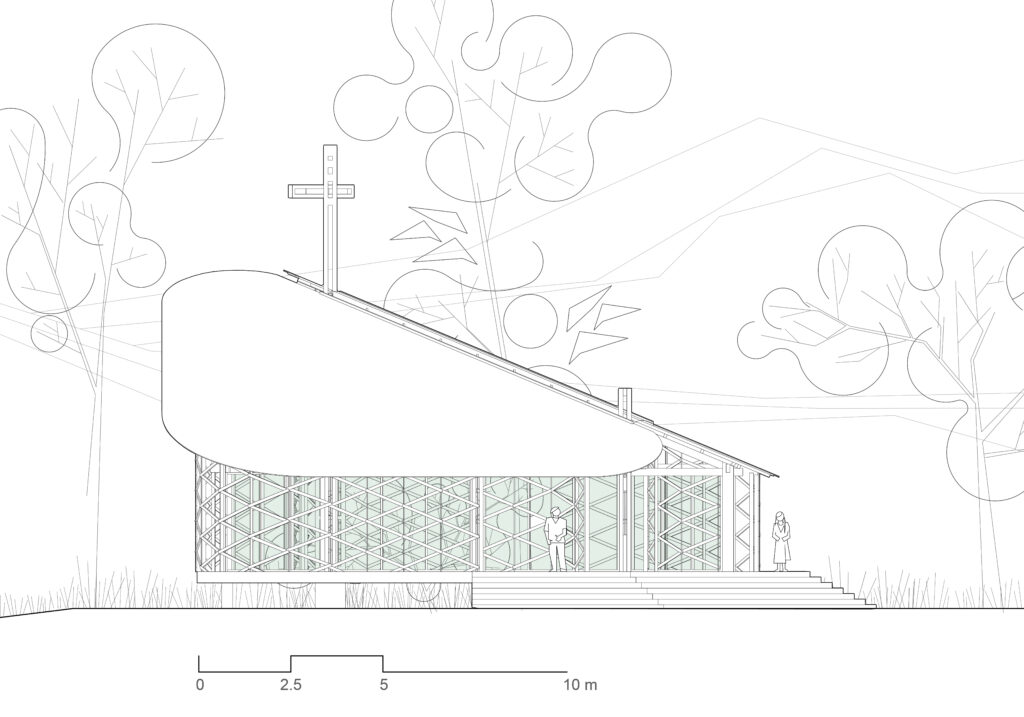
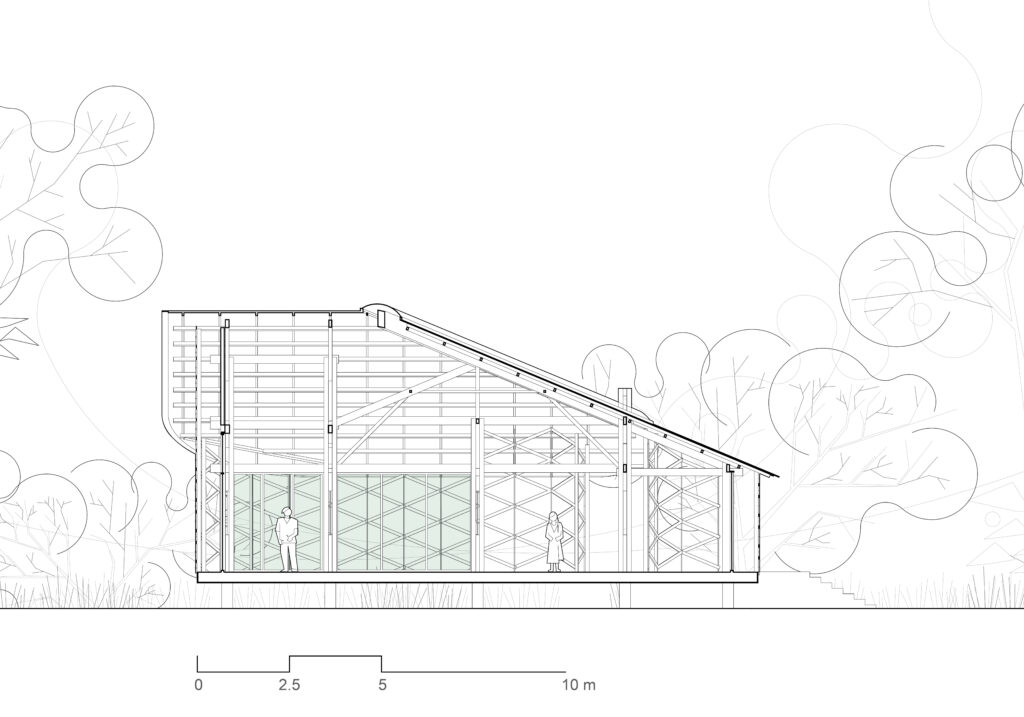


Opening and Consecration


The church was consecrated by Monseñor Joseph Phibun, bishop of Nakhon Sawn, on 17th of December of 2022 in a simple but still splendid ceremony with attendance by many signified members of local and Christian communities.
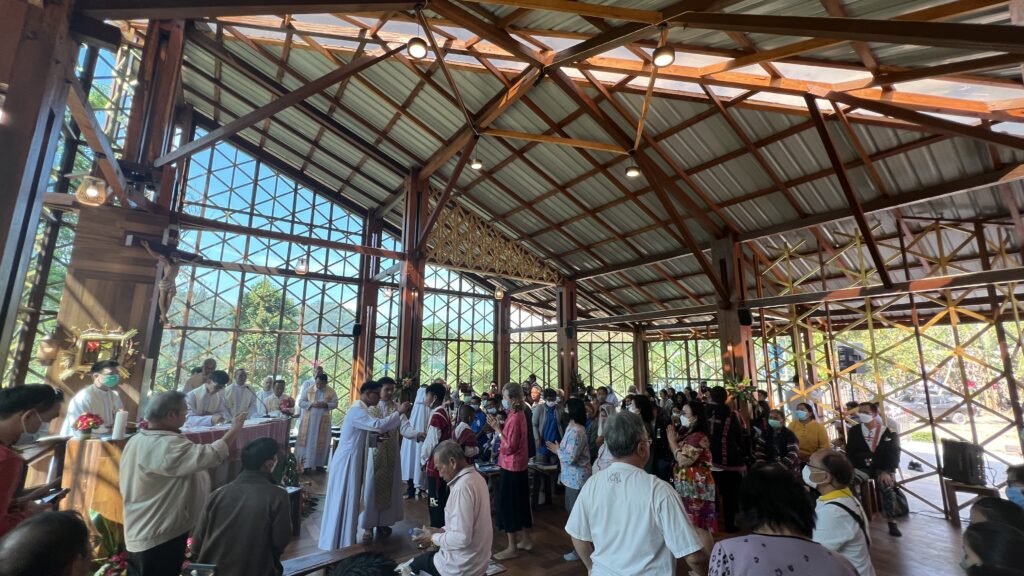
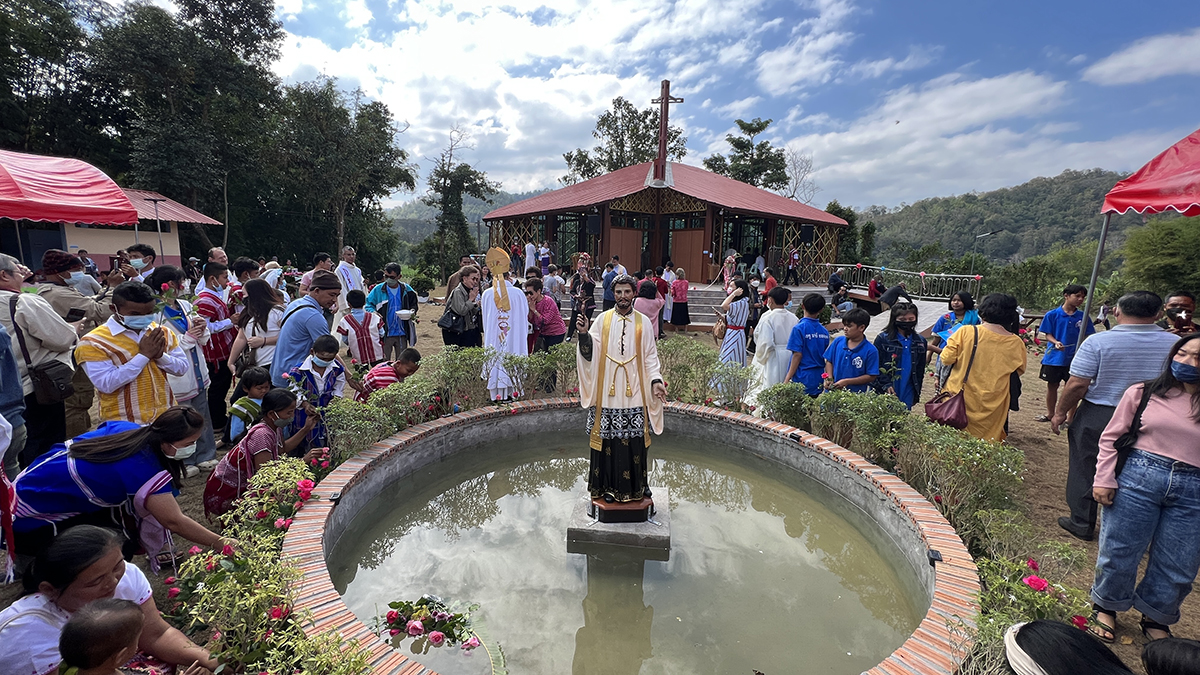
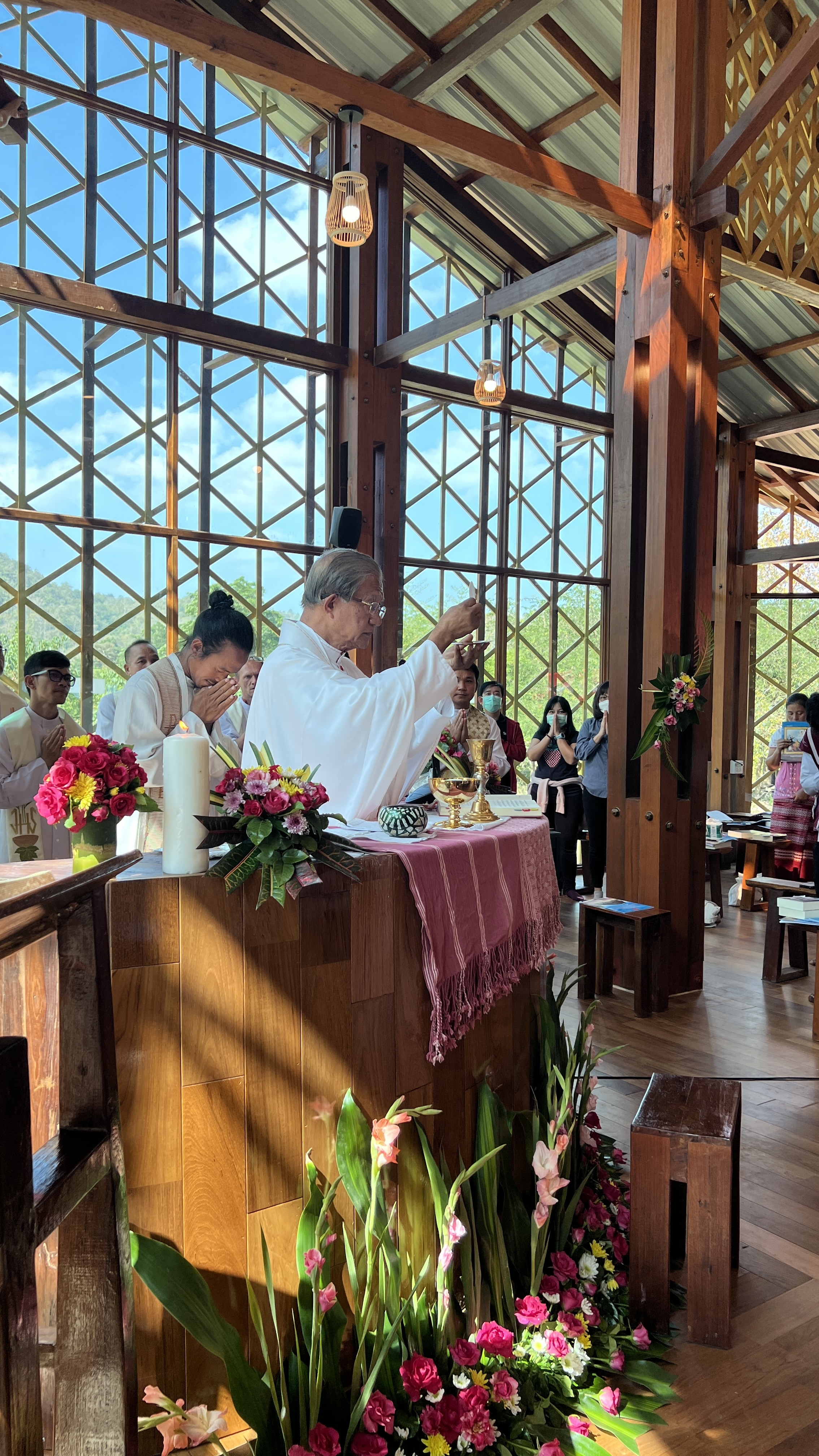
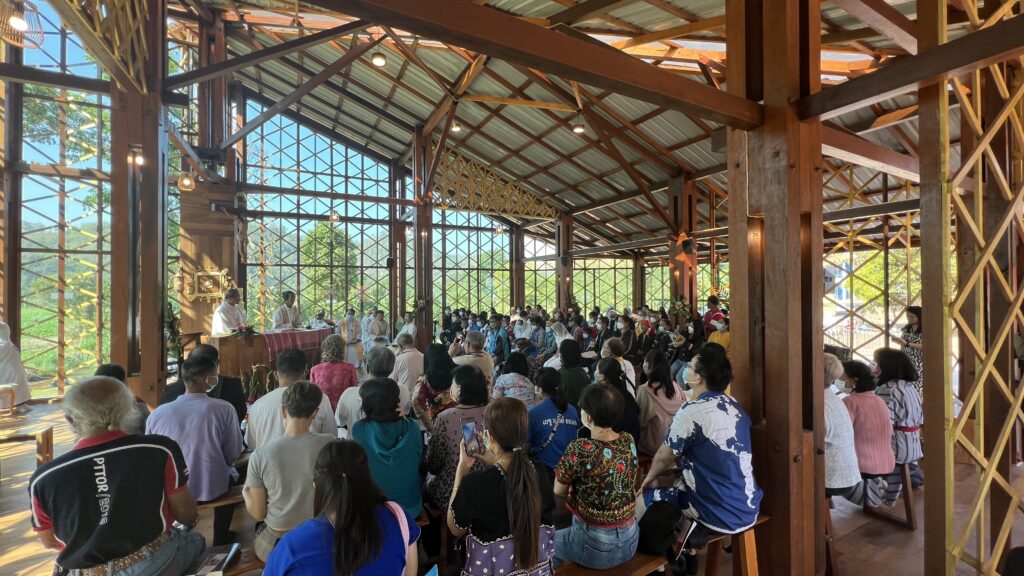

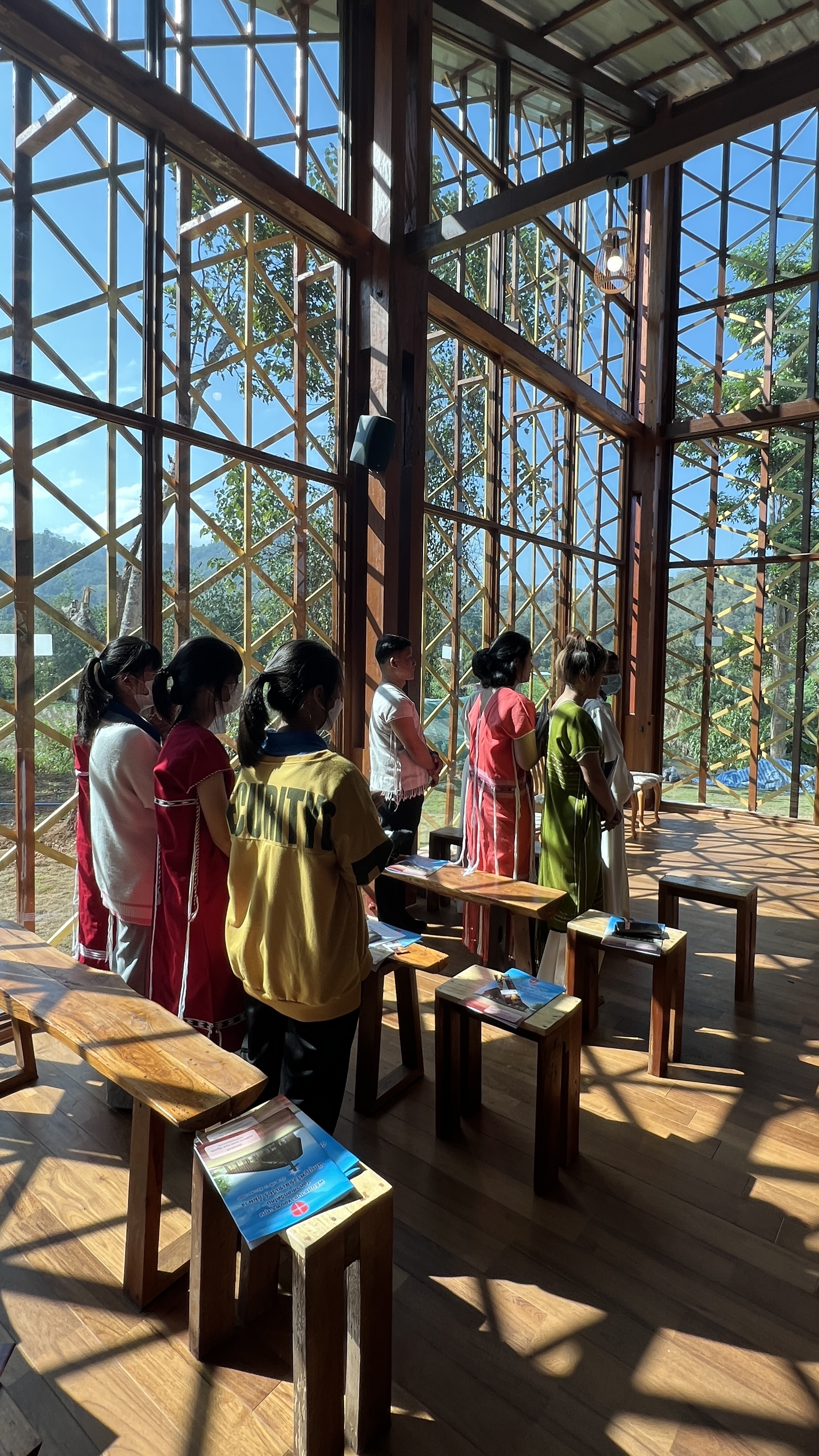

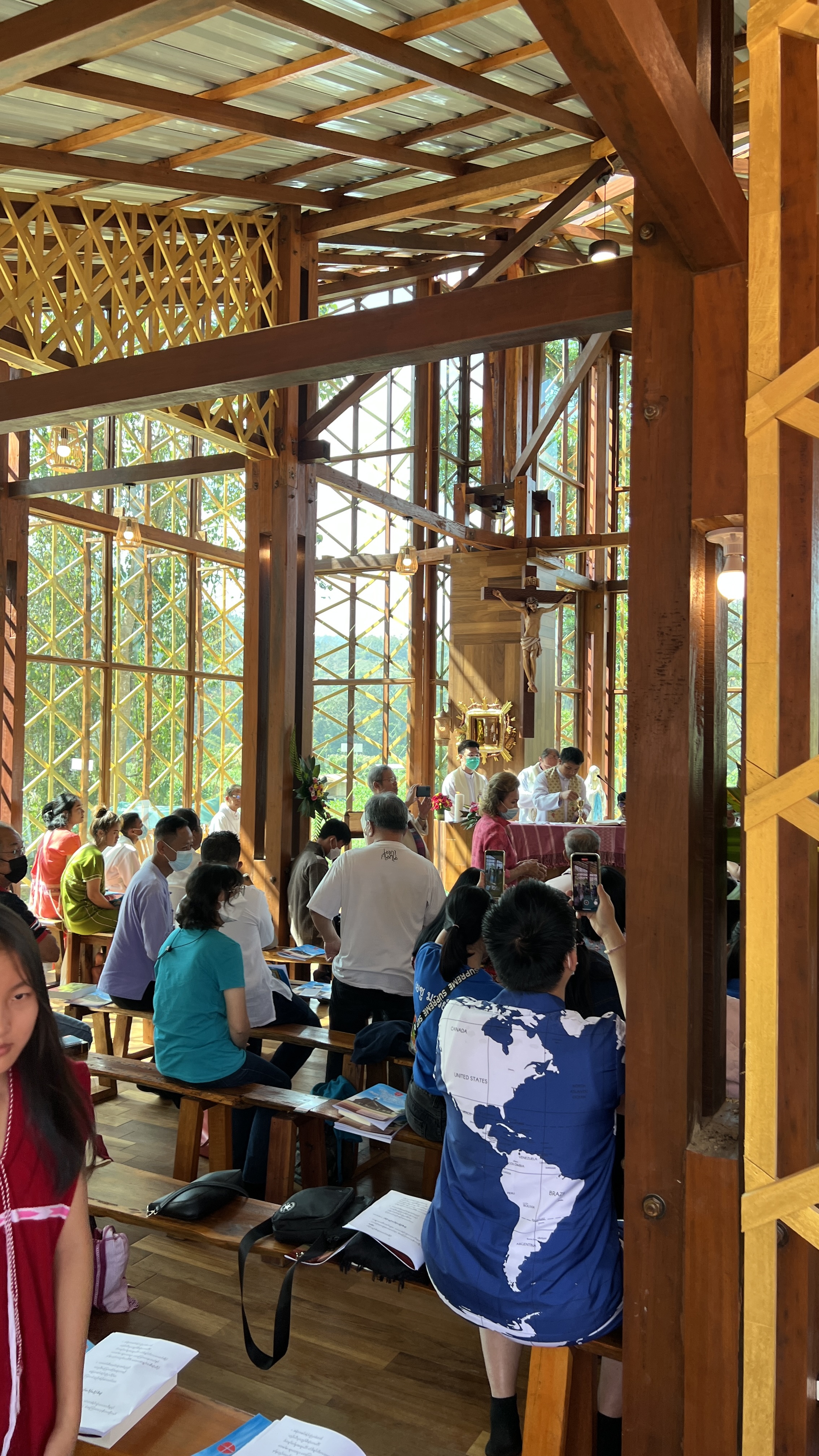

More:
If you are interested about this project, you can read very interesting pieces written by:
Nathanicha Chaidee for Association of Siamese Architects Under Royal Patronage (p. 102)
Jyncy Lype for StirWorld Magazine
Adela Bonas for Metalocus
Nacho Martín for Salamanca Hoy
Meet the Xaverians
You can also contact the Xaverian Mission in Thailand and get to know first-hand their activities.
And, of course, you can meet the Xaverians in Umphang.
This is a short video we made about the project. (I wish I had time to make a longer, better one…)
Photographs by Panoramic Studio and Paco García Moro. Feb. 2023. @pacogmoro

